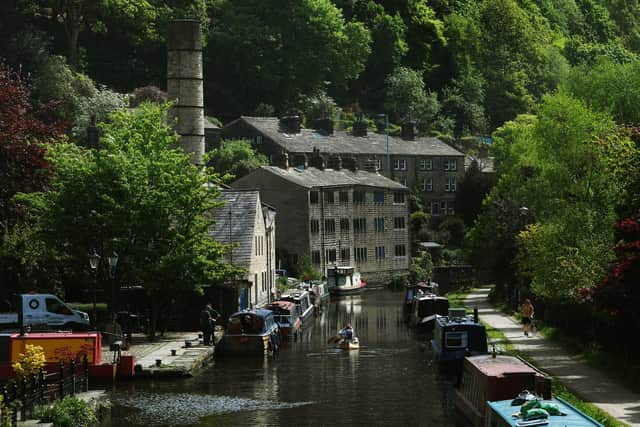Rochdale Canal: From the Industrial Revolution's motorway to tranquil wildlife haven
This month marks 20 years since its final restoration after it fell into disuse, and a grand reopening by television broadcaster John Craven, of Countryfile fame.
To mark this anniversary, volunteers have reflected on its changing purpose, from the “motorway” of its day carrying coal and cotton to a treasured waterway.
Advertisement
Hide AdAdvertisement
Hide AdDiana Monahan is a volunteer with the Canal & River Trust, well versed in its history.


Before the canals, she said, packhorses were used to carry goods over the Pennines from Yorkshire, but a boat could carry 400 times more.
“The Rochdale Canal was built to facilitate trade, keeping it going for 100 years or so,” she said.
“In the mid-20th century the canal owed its revival and eventual restoration to tourism and the leisure industry. In the 21st century, the emphasis is on physical and mental wellbeing.”
Advertisement
Hide AdAdvertisement
Hide AdThe Rochdale Canal, Britain’s first trans-Pennine canal and connecting Yorkshire’s Sowerby Bridge to Manchester city centre, has long been dubbed the ‘Everest of canals’.
Stretching 32 miles through historic market towns, industrial cityscapes and uplands, it rises 600ft and features 91 locks including Britain’s deepest at Tuel Lane in Sowerby Bridge. Built by navvies, using mattocks, spades and wheelbarrows, the canal was seen to be of great national importance – “laying the foundation of growing prosperity and wealth”.
Opened in 1804, it survived the coming of the railways, but it was a sudden surplus of Army vehicles at the end of the First World War that brought an end to its use.
The reservoirs were sold to water corporations, and derelict sections filled in, and by 1952 most of it was legally closed, said Ms Monahan.
Advertisement
Hide AdAdvertisement
Hide AdIt wasn’t the 1960s, with a growing interest in boats as a leisure activity, that its revival was recognised, and by the 1970s restoration began. It fully reopened in 2002.
Once derelict cotton mills that lined the route are now transformed, while a 12.5 mile section has recently been awarded prestigious Green Flags in recognition of its importance. There are projects along the route, such as the popular Incredible Edible garden scheme in Todmorden which has sown the seeds for a canalside movement to grow free fruit and vegetables.
Lizzie Dealey is partnerships manager for the Canal & River Trust charity.
“All of our canal systems in Britain have such an amazing heritage, with all of that history,” she said.
Advertisement
Hide AdAdvertisement
Hide Ad“It’s living heritage – because it’s still functional and important today. There was an amazing effort, through the 50s, 60s and 70s, to save this canal, or we would have lost it.”
To celebrate this month’s 20th anniversary date, the Canal & River Trust is calling on more people to join its campaign #ActNowforCanals.
An army of volunteers support its work, with specialist lock keepers, litterpickers, and people checking towpaths.
Richard Parry, trust chief executive, said: “The positive benefits for people and wildlife resulting from the restoration of the Rochdale Canal in 2002 are amazing.”
